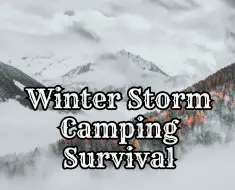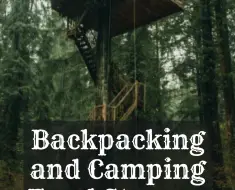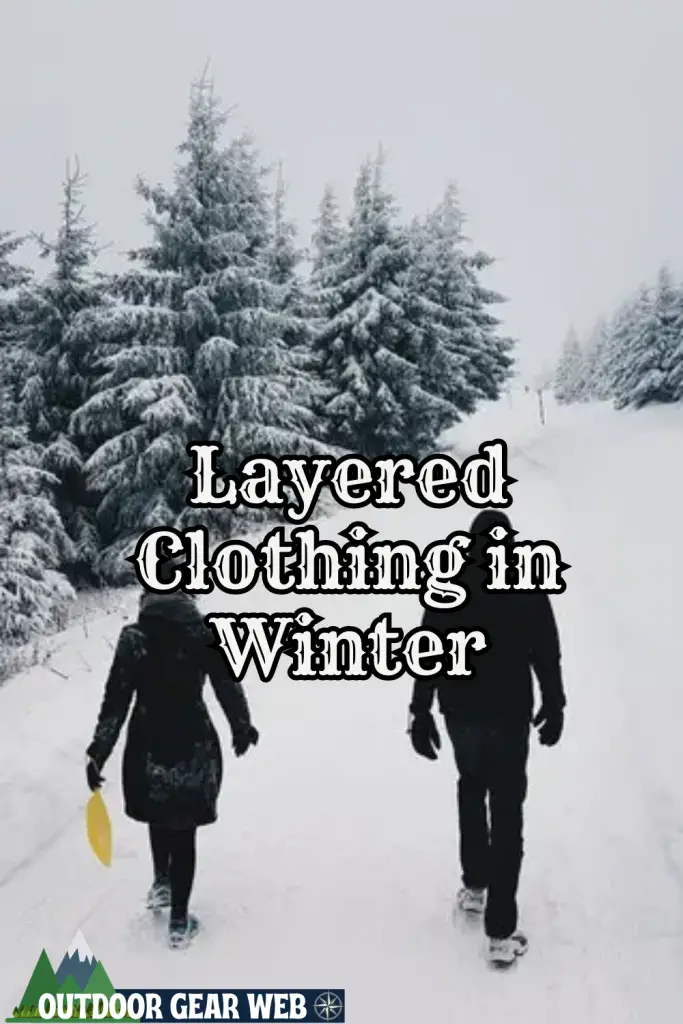
It is all fun and games in the outdoors until someone gets frostbite. There is a reason that we all ended up looking like the Staypuffed Marshmallow man when we went out into the snow. We used to hate being bundled up so tightly by our parents, but they were following a basic tenant of outdoor survival. Wearing layered clothing in winter is critical to ensuring that you stay warm and dry. It is even more important to follow these basic layering techniques when you are planning a hiking or camping trip to the outdoors. You do not want to end up with hypothermia or worse losing appendages due to frostbite. So when you head out camping or hiking this winter make sure to layer up!
Pack Those Layers
Being ready for winter camping starts before you even head out into nature. In order to wear layered clothing in winter, you need to make sure you have packed it in the first place. As such consider bringing warmer clothing. This should include your midweight base layers and your heavier outer layers. When packing you want to make sure that you have packed each of the three layers to be prepared. Remember one is none so have a backup in case you get wet or something happens. It would be better to have it packed and not use it than to not have packed it and needed it. Most importantly, leave the cotton products at home!

Basics of Layered Clothing
It is very clear that the more clothing that you have on the better you are going to be able to regulate your body temperature. However, it is important to know what the layers are and how to best apply the layering system. If you put the wrong type of material next to your skin you are going to have a bad trip! There are three basic layers that you are going to want to have in your pack. Each of these layers should work together and not hang or catch. Make sure to try your layers together to ensure that they do not interact poorly with each other or make a tight fit. These layers are the base layer, the mid-layer, and the outer layer.
Base Layer: This is the layer that is going to be the midweight material generally. It will be what is touching your skin and is the first set of insulation to the outside world. Generally, this is going to be your underwear layer. Its main intent is to help wick water away from your body. This layer includes things like long underwear, fleece pants, and some thicker type shirts. When you are packing make sure that you find materials like polyester or wool for this layer. These types of materials help to wick water away and dry quickly.

Mid-Layer: These include things like fleece pants, thicker shirts, and puffy pants/jackets. This is your real first chance to add some hefty heat collection through proper insulation. If the base layer is wicking moisture away from the skin then the mid-layer is in charge of doing the heavy lifting. This is the layer that will keep your body heat in. For the mid-layer, you want to choose products with proper insulation that are comfortable to wear. For the mid-layer think MTC or Material, Thickness, Coverage. Without one of these three pillars, you will likely not be retaining heat.

Outer Layer: A heavy waterproof jacket and pants make up the bulk of this layer. While you will still be getting some insulation factor from this layer the prime function is a bit different. Here you want to keep the water from outside penetrating all the way to your skin. So this layer should not only be warming but also waterproof. Aside from being waterproof, you will also want to make sure that it also provides wind protection. It is fairly normal to see wind/waterproof together on apparel today. You don’t want to forget your hat, gloves, and sunglasses though as well.

Set Your Thermostat!
So now that we know what each layer does we can think about layered clothing in winter as our thermostat. To turn the thermostat up we add a layer. To turn it down we remove a layer. You need to adjust your thermostat in preparation for the weather or activity that is coming. If you wait too long it is likely that you will overheat or not be able to warm back up. Let’s take a look at how best to select the layers so that you can calibrate your thermostat just right!
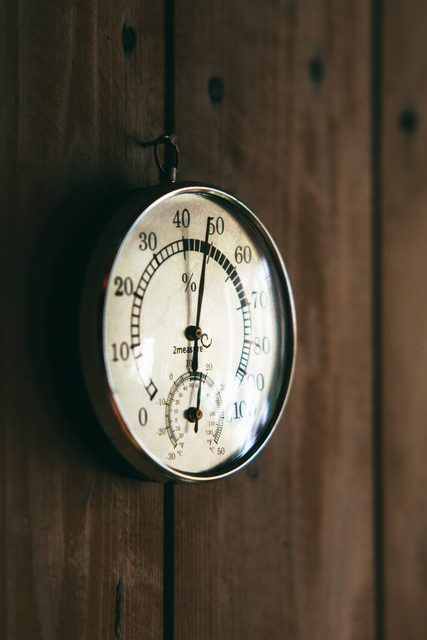
Selecting your base layer
There are three primary options in the base layer. The lightweight, midweight, and heavyweight styles for winter camping. Keeping your skin dry is of the utmost importance because if you are dry you have a better chance of staying warm. Therefore, it is your undies’ job to keep moisture off of you! You need to consider three things for this layer. The TDT or the Texture of the material, the Fit of the material, and the Thickness.
- Material Texture: Texture is so key here for two reasons
- The first is that the material will be against your skin and you do not want irritation.
- The second is that texture helps with wicking and drying.
- Recommendation: Choose a base layer of one of these materials
- Fleece – delicate, non-itchy
- Merino Wool – is a decent normal fiber choice that is odor
- Polyester – non-itchy, durable
- Material Fit: We need to promote Wicking. This only occurs where fabric is in contact with the skin. Don’t squeeze yourself into a sausage casing but make sure you have a comfortably tight fit without irritation.
- Material Thickness (weight): The weight is going to be dependent on your expected outside temperatures. The colder it is outside the heavier your base layer may be. Your activity level may also affect your base layer. So consider these three quick looks on your base layer
- Heavy may work best for frigid temperatures and low action
- Medium is for cold weather and moderate activity
- Light is best passed on to milder conditions and/or being very active
Gear for base layers:
Selecting your mid-layer
The mid-layer is your primary layer of insulation which is why it is so critical to layered clothing in winter. This layer is generally going to be your thickest layer where you are providing your body the greatest chance of retaining heat. The goal of this layer is to retain as much heat as possible. Similar to base layers there are many different options for materials. Generally, the thicker the layer the more insulation you are going to have. Just like a house. If you have three inches of insulation in a house you will lose more heat through the attic than if you have 12 inches. Additionally, each different material type is going to retain heat differently so thicker may not be better. For the mid-layer consider MTC or Material, Thickness, Coverage of the insulation.
- Insulation material: The material will play a role in how thick you have to go.
- Fleece – Make sure that the jacket you select is heavyweight as fleece is best in cold but not frigid
- Puffy Jackets – This should be your go-to for your mid-layer in frigid temps
- Downfilling in puffy jackets is the best. However, it can be expensive and will get ruined when it gets wet.
- Synthetic filling is a better option for an all-around mid-layer. This way you are covered in wet conditions. It will still keep you warm when wet.
- Insulation thickness: As mentioned above, the thickness is really dependent on the material that you have selected. A good starting point is to review the tag on the clothing. It will give a general temperature range. However, you want to take this with some caution as outside conditions can affect this such as wind, precipitation, and how active (sweaty) you are. So compare similar jackets side by side and see which feels warmer as you try it on.
- Full coverage: The jacket isn’t the only place where you want to consider this type of insulation. So make sure to get those legs covered too! Fleece and Insulated pants should follow the same material and thickness information above. Make sure you are retaining heat in your legs as hypothermia and frostbite occur in your lower limbs too! It is sometimes possible to find some excellent matching sets.
Gear for mid-layers:
Selecting your Outerlayer
The outer (or shell) layer is your first exterior line of protection from wind and precipitation. The primary function of this layer is to prevent moisture and the biting wind from making it to your skin. The base layer wicks water away from the skin and the outer layer prevents outside moisture from getting in. Many may refer to this layer as simply rain gear but it can be so much more than that. In fact, without this layer allowing breathability from the lower layers, you will get chilled. Consider PPP or Protection Protection Protection when looking at that outer layer. Your layer should have wind protection, precipitation protection, and breathable protection. This will make your outer layer successful in your layered clothing for winter.
- Wind Protection: We often don’t think about the wind until it is driving straight to our bones. Most outer shells are going to prevent this type of penetrating wind with their sturdy outer layer. Windchill can be a killer and drop the temperature by 15 degrees or more. So it is key that you have a wind protection layer.
- Precipitation Protection: Your base layer is going to do a very poor job if you do not prevent external moisture from getting into your thermostat. You also don’t want to create a scenario where you have allowed your skin to evaporatively cool which is what sweat is meant to do. As such, try and find an outer shell that is waterproof vs water-resistant. Ensure that any shell you buy is coated with durable water repellent. Reapplication of water repellent may be necessary over time.
- Waterproof: Generally this is going to be your most functional shell because it will be ready to handle heavy precipitation. This benefit comes with a price but you should consider the added protection and breathability. Likely, this shell will last you longer as well so consider it a long-term investment.
- Water-resistant: If you know that you are going to be very active and that the weather in your area is not going to get very severe then water-resistant may be a good compromise. They are normally made of synthetic materials and are good for light wind and precipitation.
- Breathable Protection: As mentioned before, moisture is being wicked away from your body and it needs to have a way to escape. Don’t create a barrier for moisture escaping. It may seem counterintuitive that the shell can prevent water from getting in but let it out. However, if you look for breathable on the tag it should do just that.
Gear for outer layers:
Other temperature regulators
There are other items in your layered clothing for winter that you should not leave out. It is important that you cover your exposed skin. Anywhere that you can have heat loss poses a risk for creating a hypothermic situation or frostbite. So add these other regulators into your thermostat in preparation for being outside in the winter.
- Hats: Having a wool hat or a synthic one will help to ensure you retain warmth in your head. Make sure your outer shell has a hood to help prevent these from getting drenched. Ear and face coverage may also be necessary given the conditions so consider full coverage headgear.
- Sunglasses/Goggles: Your eyes need protection from wind and rain too. Not only that but in snowy conditions after a storm the snow can reflect so much light that you can get snow blindness. Try and find goggles and glasses that provide UV protection while also allowing for clear and unobstructed vision.
- Gloves: Some may recommended multi-layers of gloves. A thin inner glove for wicking and an outer glove for water protection. However, with the advancements in handwear there are sufficient models to provide both in a single product. The goal as always should be to maintain functionality while preventing water and wind intrusion. Remember that a mitten will be best over a similar glove because your fingers can share in the hand sauna you will have going on!
- Socks: The bottom line here is never wear cotton socks. Find some good wool or synthetic socks that let your feet breath but keeps them warm. The thicker your sock the harder it is going to be to put that boot on so make sure you try and socks with the boots you are going to wear.
- Boots: Much like the outer shell the boot is there to keep your feet dry from external elements. Make sure that you have a sturdy sole that lifts your foot up out of the water, snow and mud. It should be breathable and provide support for your feet. Try to find boots with insulation and waterproofing.
Gear for temperature regulators:
Final Thought on Layered Clothing in Winter
It is critical that you learn how to layer in the winter. If you are not prepared there could be serious consequences. However, buying layered clothing in winter does not have to be expensive or difficult. Take your time and find the right products that work for you and fit comfortably. There are a few other things to keep in mind once you are layered up. Remember to adjust your thermostat in preparation for the weather. The next is to make sure that your layers fit and work well with each other. Finally, and most importantly leave those cotton products at home. So get out into nature with a well-calibrated thermostat. You will enjoy extending your camping season through proper preparation. Don’t be ashamed to stay warm like your parents used to dress you!
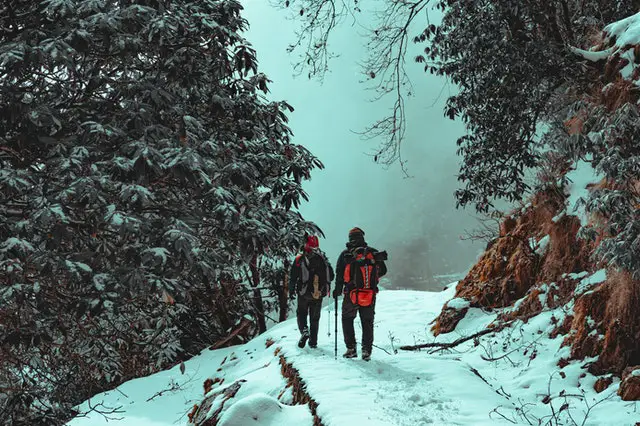
Have you had any good or bad experiences with layering in the wintertime? We would like to hear about them in the comments, on our Facebook, or on Reddit!

















